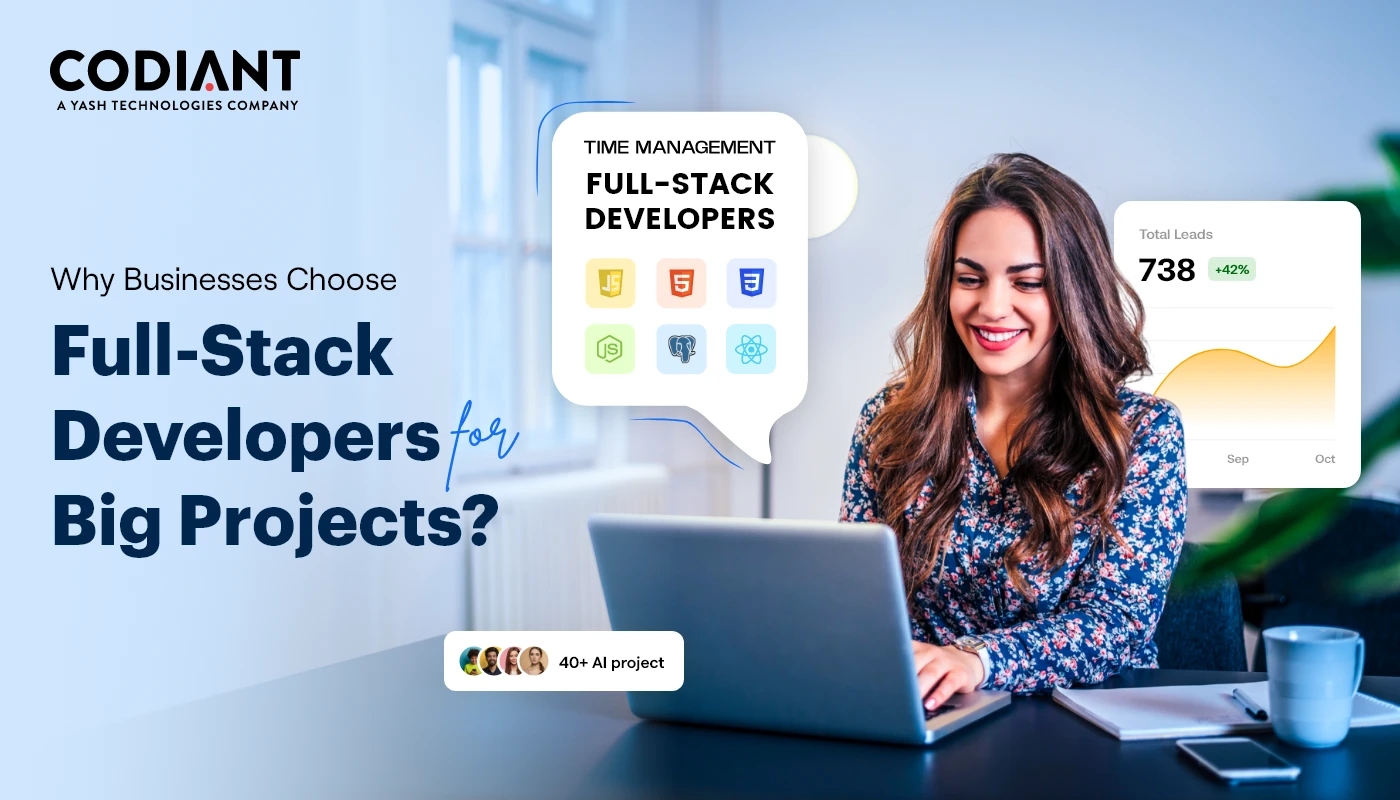Edge Computing: The Next Generation of Innovation
Table of Contents
Subscribe To Our Newsletter

The IDC report forecasts global spending on edge computing market growth will reach $317 billion by 2026. The estimated expenditure on edge computing will reach $208 billion by 2023, with an increased rate of 13.1% from the 2022 figure.
Edge Computing is one of the revolutionary technologies that can evolve organizations aiming to let themselves free from the limitation of traditional cloud networks. Initially, edge computing is applied to low-latency situations, which demand high computing ability and quick actions. These activities can be IoT robots working on gestures or sensors that regularly monitor vaccine temperature during production.
In the data-dependent world, almost 90% of the generated data is processed in centralized data centers. However, according to a popular study, about 75% of the existing data demands analysis and action at the edge by 2023.
Organizations are still under debate on how edge computing is different from traditional data processing and how it can be one of the vital players in the innovation of next-gen technology and create a seamless IT infrastructure.
What is Edge Computing?
Edge Computing is a networking philosophy that works in a direction to minimize the latency between computing and the source of data and bandwidth use.
In simple words, Edge Computing architecture means implementing a few processes in the cloud and then rapidly moving those processes to local user storage or devices, like a user computer, an edge server, or an IoT device. Introducing process computation to the network’s edge minimizes the number of distant and time-taking interactions that occurs between the client and server.
The edge computing applications which interact closely with local devices are becoming more intelligent and standardized with time. Edge Computing have a lot to offer for both end customers and businesses. The edge computing-based application delivers a seamless and personalized user experience, enhances business processes, and more.
Further, let’s examine some promising use cases for Edge Computing. We’ll then exploring some challenges users usually experience with edge computing.
Edge Computing Use Cases Across Various Industries
Edge Computing has a lot to offer to smart IoT applications across various industries. It offers advanced security, and productivity, and enhances the overall performance of enterprises.
1. Edge Computing in Retail & eCommerce Industry
Retail and eCommerce apply edge computing architecture to enhance and refine customer experience and gather more raw information about the business.
Inventory Management: To maintain a cordial customer experience, it is the major responsibility of businesses to maintain secure and efficient inventory management services. Such that products are available for customers when they want, and understand the customer’s needs and products availability.
All this can be managed by integrating in-store intelligent video image recognition. AI technology can track inventory status and take action accordingly.
Big Data & Analytics: Edge supports real-time data processing and analytics at the source of data generation. This makes it easier for retailers to use AI and Big Data technology with a pool of raw data and generate meaningful results.
The generated insights from the available and collected raw data help retail and eCommerce businesses boost their operational efficiency level.
2. Edge Computing in Banking & Finance Industry
The banking & finance industry is combining edge computing’s potential with other technologies like Cloud, AI, and 5G networking across banking networks. And some of the exciting applications of edge computing in this industry are;
Data Privacy: Organizations with cloud hosting services transfer their data to a central location. Hence, to remain a reliable institution, it becomes mandatory for them to practice high-end privacy and security guidelines to minimize the cases of data theft or unauthorized access. Despite that, the data are always prone to theft or loss.
Integrating edge computing makes data handling quite easier for banks and financial institutions. These institutions can deploy edge computing-integrating applications to their local branches and minimize the dependency on cloud computing and also the chances of data loss.
ATM Security: Edge AI technology can be used to enhance ATM security by accessing video feeds that can be analyzed through the edge by integrating image recognition. Moreover, it doesn’t require human interaction and even doesn’t demand initially to transfer the data to the cloud.
On the other hand, if an ATM machine experiences any tampering, then the machine will shut down automatically without delay. Simultaneously alerts the bank about any malpractices and can act by contacting law enforcement.
3. Edge Computing in Healthcare Industry
Edge Computing supports healthcare industry data analysis in solving issues, and making accurate decisions by integrating ML capabilities without requiring cloud support.
Remote & On-Premise Patient Monitoring and Care: Engaging edge at the on-premise of the hospital can process data locally and ensure data privacy and compliance, compile multi-source data within the hospital, and yields relevant information. This promotes resource efficiency for clinicians, boosts productivity, and minimizes the expenses on patient care.
In remote patient monitoring, the edge technology with IoT-integrated devices or wearables can provide real-time patient health status and also alert patients and clinicians in case of any error, health deterioration or medicine skip. It promotes patient care and assistance in remote areas without a clinician all-time presence at the location.
Operation Theatre Assistance: Edge Computing adoption with AI is transforming operation theatre experiences by introducing AI-assisted surgeries. The AI system can instantly start monitoring a patient’s condition and can even perform identical surgeries in the absence of experts. This becomes possible as the AI-operated devices can learn from previous experiences and perform processes with much-needed precision.
4. Edge Computing in Manufacturing Industry
The manufacturing industry is adopting edge computing for transformation by merging Information Technology (IT) with Operational Technology (OT) to present advanced efficiency, transparency, and timely data analysis.
Predictive Maintenance: This process predicts the failure or any issue in advance that may arise in upcoming days. It provides a window for the business owner to prepare themselves for the potential breakdown or avoid such situations by implementing preventive measures.
Despite that, there are many challenges to integrating insights from operational technologies into IT systems. With edge computing, it becomes possible to process the data that are closer to the device where it is generated and avoid the cost of transporting data to the cloud and improve data accessibility.
Condition-Based Monitoring: Manufacturing businesses generates a huge amount of data that helps manufacturers to analyze data patterns and make accurate and profitable business decisions.
The massive generation of raw data usually overloads the central server. Thus, to reduce this burden on the cloud and make the fast-moving of only valuable data, edge helps to clean the data and transfer only the required data to the cloud server.
Benefits Of Using Edge Computing
1. Speed
Edge Computing architecture promotes on-spot data processing or at a local data center, which minimizes operational latency. As a result, when the data is stored or accessed from the cloud the processing of data becomes much faster.
2. Scalability
Edge computing adoption in an organization can expand the number of computational resources and presents consistence performance with the combination of multiple dedicated devices and local data centers. This expansion of devices and data centers doesn’t hamper the bandwidth of the central network.
3. Versatility
Edge Computing supports the collection of a huge amount of valuable data from multiple sources. The edge computing architecture handles the raw data and allows the central network to hold processed and organized data for further machine learning or data analysis.
4. Reliability
The edge computing architecture supports data management to the nearest device of the user. Hence the system remains less dependent on central networking.
5. Security
Edge Computing infrastructure supports the spreading of storage, processing, and related applications on near devices and local data centers. This security formation structure neutralizes the disruption of the entire network.
Challenges In Using Edge Computing
1. Network Bandwidth
The network bandwidth usually varies as the organizations transfer their processed and raw data to the edge. Moreover, by following the traditional method the enterprises allocate higher bandwidth to the data center, and for endpoints it allocates lower bandwidth.
Edge Computing demands the need for higher bandwidth across all networks. This remains the challenge for edge computing architecture to maintain the balance between networks while maintaining high performance.
2. Geolocation
Edge Computing promotes the role of location in the data processing. It is so because to maintain the proper workload and deliver results consistently, organizations need to have the local data center present at the nearest location.
3. Public & Private Cloud
The usage of native cloud technology on multiple edge computing generates the demand to build a private cloud cluster across these edges. Whereas, the hyperedge cloud services like Amazon Web Services, Microsoft Azure, etc. offer the services of hyperscale economics availing public cloud constructions.
As a result, the infrastructure could now be scaled up to a smart and cost-efficient architecture by leveraging APIs (Application Programmable Interfaces) on the infrastructure built by the public cloud provider.
4. Security and Privacy
With edge computing and applications centralized at a data center, enterprises can standardize the level of security at both technical and physical levels by building a virtual security wall around the resources.
Edge computing architecture can evolve the security footprints that require remote servers for the same network and physical security structure to present traffic patterns and location. The IT networking team require to clearly present user access, as edge computing needs access rights for users over multiple devices at a time.
5. Edge Computing Framework
The edge computing framework follows different approaches to store data and manage accessibility. Whereas the centralized infrastructure only follows a unified approach for edge computing, hence it requires detailed attention on every “edge” point.
What’s the outlook for edge computing spending globally and its impact on industries?
It is anticipated that global investment on edge computing would reach $317 billion by 2026, having grown at a rate of 13.1% to $208 billion by 2023. Because edge computing provides real-time data processing, greater security, and increased operational efficiency, it is revolutionizing industries such as manufacturing, banking, retail, and healthcare.
Conclusion
The adoption of cloud computing infrastructure has introduced a new level of data analytics. The multiple clouds’ interconnectivity supported a more detailed approach to collecting and analyzing raw data.
Edge Computing adoption has made things even more efficient. Hence, the business operations quality has improved significantly. It is a viable solution for data-driven operations that demand instant results with a high level of flexibility based on the current state of things.
By integrating edge computing in your organization, it will support your organization to run more effectively, deploy incredible innovations at a rapid pace, and derive better value from affiliations.
To give a new dimension to your digital business and fasten the operations by integrating advanced technologies, you can connect with our tech experts to build a tailored solution catering to your business requirements.
Featured Blogs
Read our thoughts and insights on the latest tech and business trends
Top Reasons Why Healthcare Providers Need Mobile Apps Today
- October 27, 2025
- Healthcare
If you’ve been to a clinic lately, you might have noticed something new-paper forms are almost gone and screens are everywhere. From booking doctor visits online to checking your recovery updates on your phone mobile... Read more
Which is Better for Your Business in 2025- Chatbots or Conversational AI?
- October 22, 2025
- Artificial Intelligence
In a Nutshell: Chatbots = Simple & Fast- Great for FAQs, appointment bookings & routine customer support. Conversational AI = Smart & Scalable- Uses NLP and machine learning to understand context, personalize replies & handle... Read more
Why Hiring Full-Stack Developers Makes More Sense for Complex Projects
- October 17, 2025
- Staff Augmentation
Let’s start with the obvious- software projects are messy. They never roll out like those neat diagrams in pitch decks where every arrow points forward and nothing breaks. Complex projects - think SaaS platforms, enterprise... Read more




